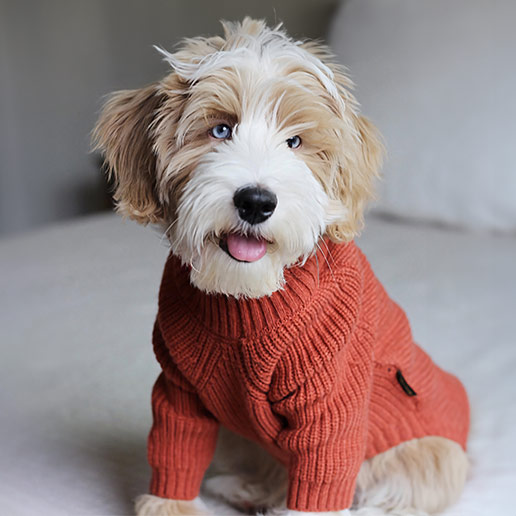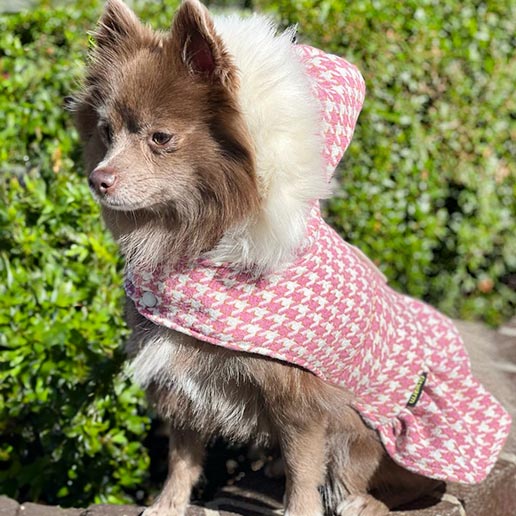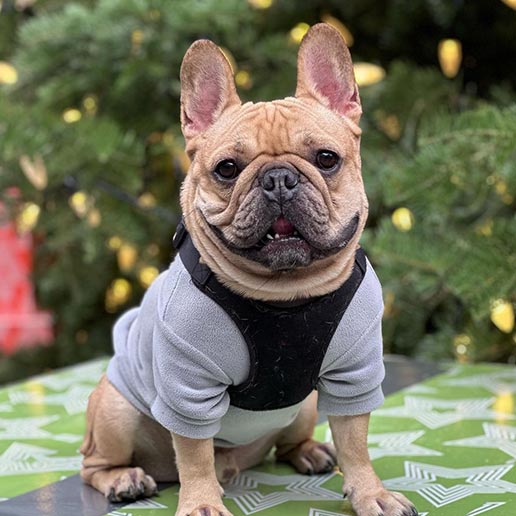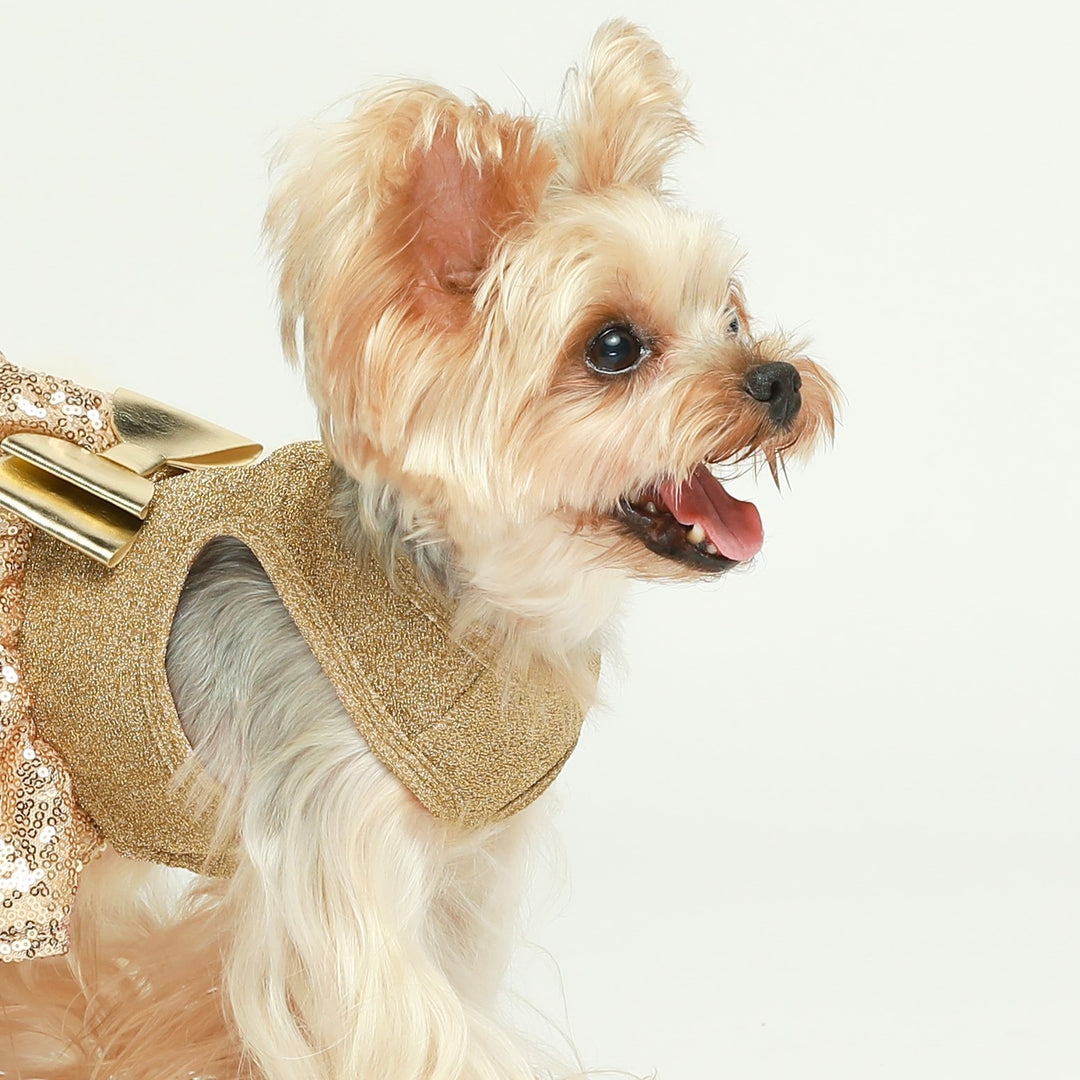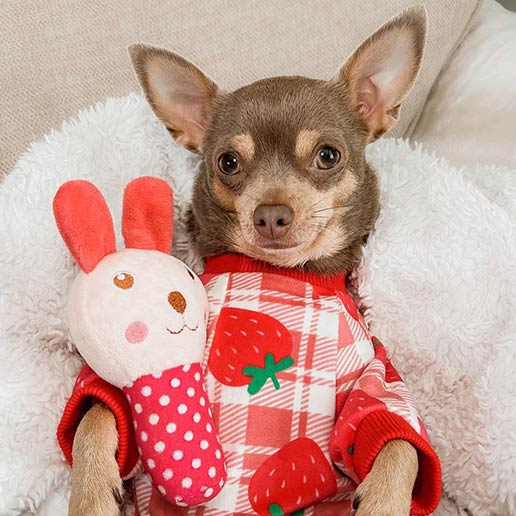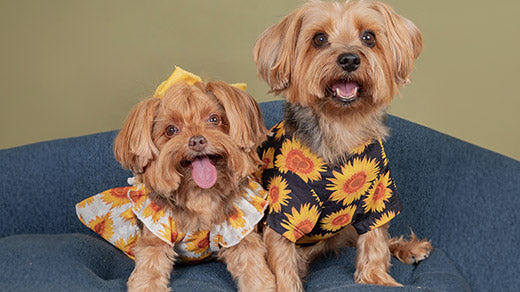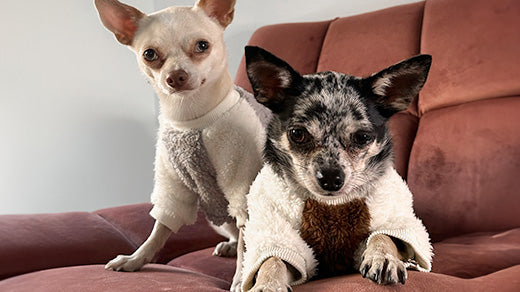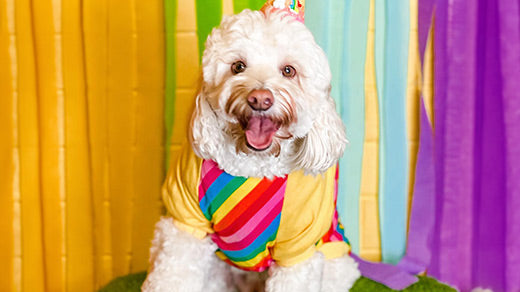Embracing Style and Comfort: Do Dogs Like Wearing Clothes?
As more people dress up their pets, many dog owners are curious about putting stylish clothes on their furry friends. But a big question remains: Do dogs actually like wearing clothes? This blog will look into the world of dog fashion, discussing not just the practical reasons for clothing, like protection from cold or safety, but also how to figure out if your dog is comfortable and happy in their outfits. We'll see how different dogs react to clothes and offer tips to make sure your pet enjoys their new wardrobe.

Do Dogs Really Like Wearing Clothes?
Whether dogs enjoy wearing clothes can vary widely from one pet to another, influenced by factors like breed, temperament, and their initial experiences with apparel. For instance, smaller breeds or those with less fur may welcome the additional warmth that clothing provides during colder seasons, while others may feel uncomfortable or confined by outfits. To determine if your dog likes wearing clothes, pay close attention to their behavior while they're dressed. Signs of comfort include a relaxed posture and a cheerful attitude, indicating they're at ease with what they're wearing. Conversely, signs of distress or discomfort, such as scratching, whining, or trying to remove the clothing, should not be overlooked.

Instagram: popcorn_desiderio
Should We Dress Your Dog in Clothes
When it comes to dressing your dog in clothes, the decision should be based on a combination of factors including your dog’s breed, the climate, and your dog's comfort and well-being. Here are some considerations to help determine if clothing is right for your pet:
-
Climate and Environment: If you live in a region with extreme weather conditions—be it cold winters or scorching summers—clothing can provide necessary protection. For example, small, short-haired breeds or those originally from warmer climates may benefit from sweaters or coats during cold weather. Similarly, lightweight and UV-protective clothing can be beneficial in protecting pets from the harsh sun in hot climates.
 Instagram: iggychelseaandme
Instagram: iggychelseaandme-
Health and Age: Elderly dogs, puppies, or those with certain health conditions may have difficulty regulating their body temperature. In such cases, clothing can help maintain their body heat and provide comfort.
-
Comfort and Behavior: Observe your dog’s behavior when wearing clothes. If your dog seems happy and behaves normally, it’s a good sign that they’re comfortable. However, if your pet shows signs of anxiety or discomfort, it might be best to reconsider. The key is to ensure that your dog is not stressed or hindered by what they wear.
-
Purpose of the Clothing: Determine the purpose of the clothes. Is it to keep your dog warm, to protect them from allergens, or simply for aesthetic purposes? While functional clothing can be very beneficial for your dog, dressing them up solely for fashion may not always be in their best interest unless they are comfortable and enjoy it.

Instagram: seattlegracedoodle
-
Safety: Ensure that any clothing is safe and suitable for your dog. Avoid clothes with small, detachable parts that could be choking hazards or fabrics that may cause allergic reactions.
Ultimately, whether to dress your dog should be a decision made with their health, safety, and comfort as the top priorities. If you choose to dress your pet, start gradually and choose the right clothing to suit their needs, ensuring they are as happy as they are stylish.
Exploring the Benefits of Dressing Dogs in Clothes
Dressing dogs in clothes can offer more than just a cute photo opportunity; it can provide real, tangible benefits for both the dog and the owner. Here’s a look at some of the key advantages:
-
Protection from the Elements: One of the most practical reasons to dress your dog is to protect them from environmental conditions. Clothes can shield them from the cold, helping to conserve body heat, especially in breeds that lack a natural thick fur coat. Similarly, during the hotter months, light-colored and breathable fabrics can help reflect the sun and prevent overheating.
 Instagram: spoiledmaltesepups
Instagram: spoiledmaltesepups-
Health and Safety: Clothing can also play a crucial role in protecting your dog from skin irritants, allergens, and pests. For dogs with sensitive skin or conditions like allergies, clothes act as a barrier against outdoor allergens like pollen. Reflective vests or jackets are invaluable for keeping your dog visible on night walks, enhancing their safety near roads.
-
Healing and Recovery: For dogs recovering from surgery or an injury, wearing a protective garment can prevent them from licking or scratching at wounds or surgical sites, facilitating a quicker and safer healing process. Specialized medical garments can also provide compression to help reduce swelling.
 Instagram: princess.kinako
Instagram: princess.kinako-
Comfort and Anxiety Relief: Some dogs may benefit from the gentle pressure provided by certain types of dog clothing, similar to the concept behind anxiety vests. This can be particularly beneficial during high-stress situations like thunderstorms or fireworks, providing a comforting sense of security.
-
Fashion and Socialization: Beyond functionality, clothes can be a fun way to express your dog’s personality and enhance social interactions. Dressing up your dog can be a conversation starter and a way to socialize with other pet owners, fostering a community of pet enthusiasts.
 Instagram: estherthepoodle
Instagram: estherthepoodleBy considering these benefits, pet owners can make informed decisions about whether dressing their dogs might be advantageous, ensuring that any clothing choices contribute positively to their pet’s overall well-being and lifestyle.
Behavior of Dogs Dislike Wearing Clothes
Although clothing can provide several advantages for dogs, not all canines readily accept wearing them. Here are some reasons why certain dogs may show reluctance to don apparel:
-
Discomfort and Restriction: Many dogs feel confined when wearing clothes that are too tight or poorly fitted, which can restrict their natural movements such as running or stretching. This discomfort often manifests as restlessness or attempts to remove the clothing, indicating that the outfit may hinder their physical comfort.
-
Overheating: Dogs primarily regulate their body temperature through panting, and additional layers can disrupt this process, especially during vigorous activity or in warm environments. Overheating can lead to lethargy, heavy panting, or even heatstroke in severe cases, making some dogs very resistant to wearing any form of clothing.
 Instagram: chowderthedog2021
Instagram: chowderthedog2021-
Sensory Overload: Dogs are highly sensitive to tactile sensations, and clothing introduces an unfamiliar layer on their skin and fur. This can be particularly unsettling for dogs that are not used to anything covering their body, potentially leading to anxiety and discomfort as they cannot acclimate to the persistent sensation of fabric rubbing against them.
-
Negative Associations: If a dog's first experiences with clothing were uncomfortable or frightening—perhaps clothing that was too tight, itchy, or put on in a stressful manner—they might associate all clothing with those negative feelings. This can make future attempts to introduce clothing challenging, as the dog may become anxious or scared at the sight of clothes.
 Instagram: max.imusthepug
Instagram: max.imusthepugChoosing Comfortable Clothes for Your Dog
Selecting the right clothing for your dog is key to ensuring they are comfortable and happy while dressed. Here are some steps to help you choose the best apparel for your pet:
-
Measure for a Perfect Fit: Before purchasing any clothing, measure your dog’s chest, neck, and length to ensure a snug yet comfortable fit. Clothes that are too tight can restrict movement and cause discomfort, while those that are too loose can lead to entanglement and safety issues.
-
Choose Breathable Materials: Opt for clothing made from breathable, lightweight fabrics that won’t overheat your dog or irritate their skin. Natural fibers like cotton are often a good choice as they provide comfort and air circulation.
 Instagram: all_cali_cuteness
Instagram: all_cali_cuteness-
Check for Ease of Movement: Ensure the clothing allows your dog to move freely without restriction. Observe how your dog walks, sits, and plays while wearing the clothes to make sure they can move naturally and comfortably.
-
Consider Your Dog’s Needs and Preferences: Reflect on your dog’s lifestyle and any specific needs they might have, such as extra warmth for shorthaired breeds or lightweight sun protection for dogs that spend a lot of time outdoors. Also, consider your dog’s tolerance for wearing clothes; start with simple items like bandanas or light vests if your dog is new to apparel.
 Instagram: lill_pippin
Instagram: lill_pippinIntroducing Your Dog to Clothing
Introducing clothing to your dog should be a gentle and positive process to ensure they feel comfortable and secure in their new attire. Here’s how you can make this introduction smoothly and effectively:
-
Start Slow: Begin by letting your dog inspect the clothing. Lay it out on the floor and allow them to sniff and examine it at their own pace. This helps them become familiar with the new object without feeling threatened.
-
Short and Sweet: Once your dog seems comfortable around the clothing, gently put it on them, but only for a few minutes to start. Gradually increase the duration as they get used to the sensation of wearing it. Keep these sessions short and positive.
 Cavalier King Charles Spaniel in Pawsome Dog Hoodie
Cavalier King Charles Spaniel in Pawsome Dog Hoodie
-
Positive Associations: During and after dressing them, offer plenty of treats and affection. This helps your dog associate the clothing with positive experiences, making them more likely to accept wearing it.
-
Watch for Cues: Pay close attention to your dog’s body language. Signs of comfort include a relaxed posture and normal behaviors like wagging their tail or playing. If they show signs of discomfort, such as whining, scratching, or trying to remove the clothing, take it off and try again later, possibly with a different type of clothing that may be more comfortable for them.
-
Consistency is Key: Consistently practice these short dressing sessions, always making sure they’re positive. Over time, your dog will learn that wearing clothes is just another normal part of their routine.
 Instagram: 4yorkiesinvegas
Instagram: 4yorkiesinvegasConclusion
While the world of dog fashion is fun and expanding, understanding and respecting your pet’s comfort and needs are paramount. Some dogs might strut happily in a sweater or raincoat, while others prefer their natural coat. Always prioritize your dog’s well-being over style, and use clothing as a tool to enhance their comfort and safety rather than merely as a fashion statement. By paying attention to your dog’s reactions and choosing the right garments, you can ensure that your pet enjoys being as fashionable as you are — comfortably and safely.



